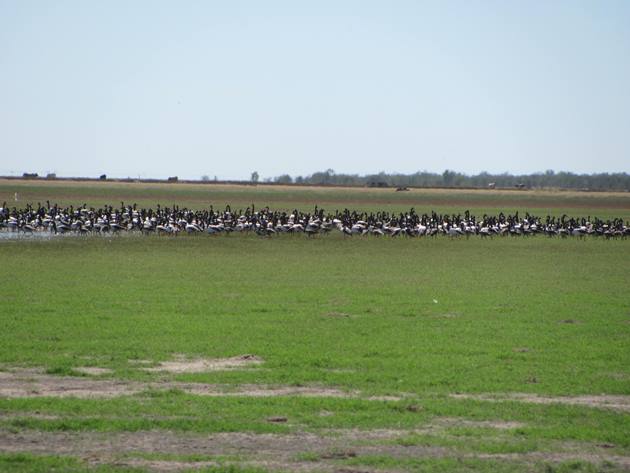
Last year was the first year since we moved to Broome permanently at the end of 1999 that we encountered significant numbers of Magpie Geese to the area. The numbers of Magpie Geese were not only significant due to the high rainfall at the start of 2017, but the Magpie Geese bred around the area and there was a population boost over the following months. The areas where the Magpie Geese have been breeding around Broome the past two years have been mostly inaccessible until recently due to the flooded land. The families of Magpie Geese are now on the move and they are gathering where the remaining water is in very large numbers. A flock of Magpie Geese that we encountered this week numbered over one thousand geese and many of them are still unable to fly or only fly short distances. The main concentration of birds is now where the remaining water is and there are literally thousands of many species, including the Plumed Whistling-Ducks in town. The Magpie Geese stand around on the edge of the water and swim in the shallows. Due to the fact that the Magpie Geese can’t all swim they generally all walk away from anything that is perceived to be a threat.
Magpie Geese-termite mounds in the background
There are also large numbers of Australian Pratincoles hawking around the remaining water as they chase down insects and there have been two Oriental Pratincoles present this past week as well. Whiskered Terns, Gull-billed Terns and Caspian Terns are also present at this patch of water.
Magpie Geese and Australian Pratincoles
The predominant shorebirds at this time of year are the Black-winged Stilts and Masked Lapwings. Black-fronted Dotterels and Red-kneed Dotterels have also bred well this year and are present where there are muddier edges to the remaining water.
Magpie Geese with Masked Lapwings and Black-winged Stilt
It only takes a Swamp Harrier or Spotted Harrier to fly low across the water to upset the flock of Magpie Geese and it then becomes clear which of the Magpie Geese can’t fly. The Magpie Geese have no choice but to hope that the safety in numbers theory works in their favour.
Magpie Geese
Having now had two years where Magpie Geese breeding around Broome has become the norm it will be very odd when we don’t have such a wet start to the year and they don’t arrive from the north. Approximately sixty five juvenile Magpie Geese remained throughout 2017 at an ephemeral lake, but then adult Magpie Geese returned after our good rainfall at the start of the year to breed once again.
With an ever changing climate the birding around Broome continues to delight and surprise each and every year. It is a place that you can never tire of birding whether it is around town at places like Streeter’s Jetty for the Red-headed Honeyeaters or the Poo Ponds for all of the Plumed Whistling-Ducks or just in your back garden especially if you have planted native plants.

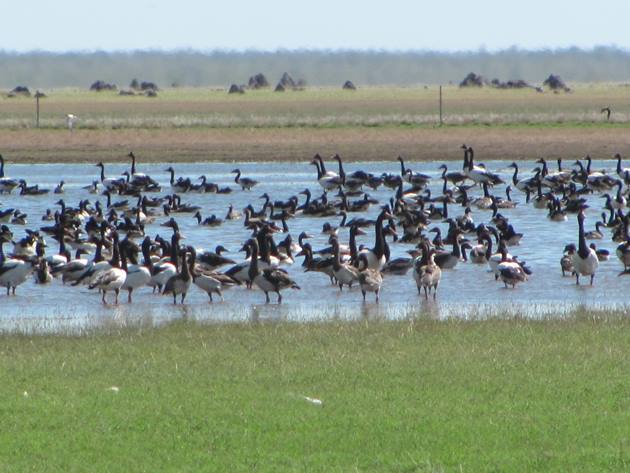
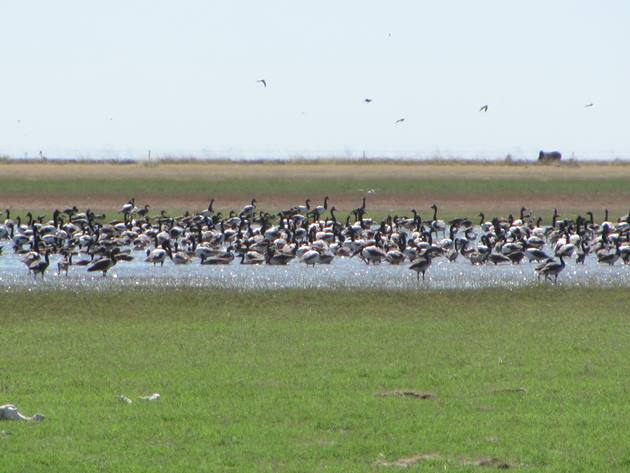
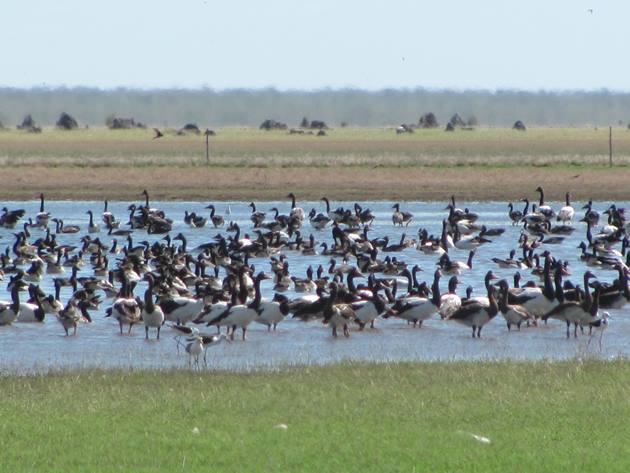
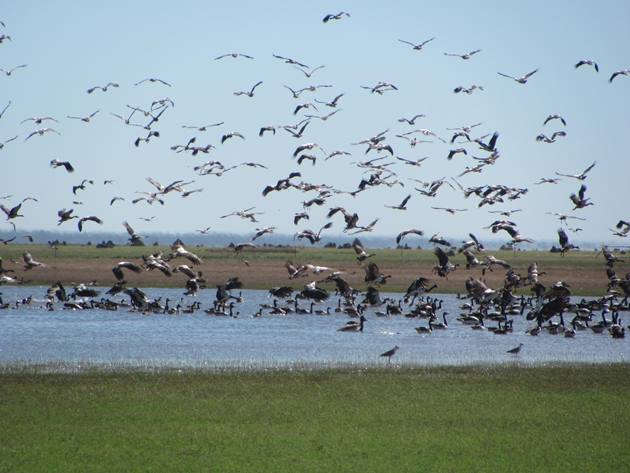










Leave a Comment